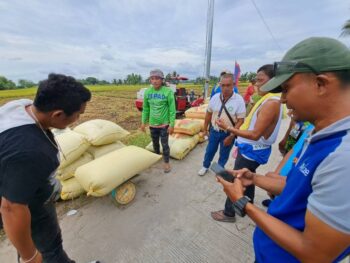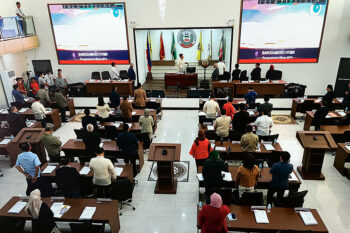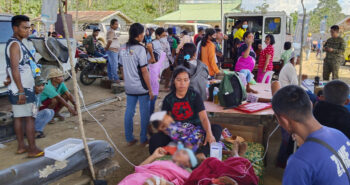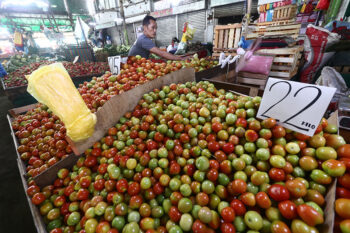MALAYBALAY CITY (MindaNews / 12 May) — There was a time when global media organizations lorded it over the media ecology. Changes over the last decades, however, may have altered it. It still pays to be an international media organization with a network in most countries or a national broadsheet newspaper with reporters and correspondents in every province. There was and still is, however, the issue of content being skewed to the center.
In the Philippines, a number of journalists complained about their stories being re-angled due to the decision made in “imperial Manila” by the central desk.
There is a greater need among local citizens to be provided with local reports.
A combination of socio-political, financial, and technological factors have pushed hyper local media to emerge from the back burners. Why is this so?
There is a shift in the role taken by the news media audience in the advent of democratization of media, such as in the case of social media. One that was plainly a consumer of news and information now plays a dual role. Now the “audience” is also a content producer somehow.
Another layer of shift is how the audience accesses news and information. Audiences from different points in the world can access geographically-specific local content, not just the specific locale and range of sources. The body of contents demanded by this new configuration of an audience-information producer has become more and more prevalent.
Hyper local content
Hyper local content pertains to content relevant to people in a specific geographic setting. Journalist Paul Farhi of the Washington Post defined it as information oriented around a well-defined community with its primary focus directed toward the concerns of the population in that community. The term can be used as a noun in isolation or as a modifier of some other term. For purposes of this discussion, we attach it to the word hyper local journalism.
Hyper local journalism pertains to the practice of journalism specializing on content that responds to a specific location. Often these contents are not covered by mainstream media or do not directly merit its attention.
For a long time, local newspapers have been pursuing hyper local journalism, although some newspapers also have the tendency to imitate the coverage of broadsheets, which is expansive in terms of both geographic and thematic coverage. One local newspaper has correspondents from across Mindanao and they have stories from across various themes such as politics, business, environment, sports, lifestyle, among others.
In other words, the work of hyper local journalism is not new, except that it is gaining more traction now with traditional newspapers being confronted with economic and other challenges. For one, news media outlets see the advantage of running a website, mail list or social media network rather than a printed version alone because it substantially diminishes overhead cost.
Many media outlets operate on a hybrid scheme – do print versions and online publishing. But this is something that not only established newspapers do. Even small-scale news operations — those who do not have printing press or printed versions but are produced by professional journalists — are also doing hyper local journalism.
This is what we are trying to do in BukidnonNews.Net, based in Malaybalay City, Bukidnon. Right now, we are focusing our limited resources on helping develop hyper local content producers from select communities in the province to develop skills and appreciation for this endeavor.
The advantage of hyper local media in covering stories is that they are more familiar with the terrain and the context. Broadsheets tend to cover issues that matter to a broader spectrum of readers across a wider geographic coverage. Thus, for them most hyper local news stories are not newsworthy.
But hyper local content is relevant for appropriate audiences. These updates focus on issues that matter to this group of audiences. If it becomes viral in social media, media based in the capital or big cities may also pick it up.
Now that broadsheets and local newspapers are rightsizing, there is an even greater need for hyper local media to cover stories in their geographic areas.
With the greater access of citizens to the internet, there is a greater need for hyper local news content to be present online. If we talk about content, we are talking about news and information content. Influencers, unfortunately, have transformed content into anything that catches attention online. Sometimes it means a few seconds of gyration or twerks with the corresponding popular tune. Sometimes it is a funny video from another country or continent.
Yes, it is important to fill out the online spaces, especially the local circles, with news and information. It should be clear and relevant information useful to the audiences. The theories of agenda setting and cultivation may resound to this.
One more reason for local news and information content producers to pursue hyper local journalism is to ensure the circulation of fact-checked information instead of fake information. An information superhighway filled with dances and jokes, or un-vetted information from vloggers in the payroll of some interested parties, is a perfect formula for disinformation.
I’m glad that a Metro Manila-based online news group has already invaded Tik-Tok with its fact-checking entries. This is a good sign.
It is important that the community circles – social media groups and pages – are full of information from professional journalists and news media content producers. This content should go side by side, if not ahead, of content produced by those whose main interest is only to win followers or monetize it.
Of course, hyper local news media entities should also win followers. Kovach and Rosenstiel in the 10 Elements of Journalism said journalists must strive to make the significant interesting and relevant. Though news is not sexy all the time, it has to be an easy read and people must see that it matters to them.
A number of sources would say hyper local content is reputed to be too parochial or insular. This is one challenge now for those who produce it. After all, if it is local consumers who demand the information, then proximity of content should take primacy.
(MindaViews is the opinion section of MindaNews. Walter I. Balane is a faculty member of a state university’s development communication department. The views he presented here represent only his personal insights.)







